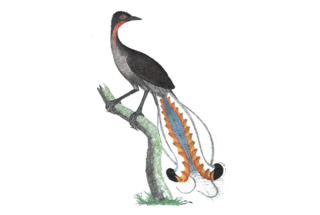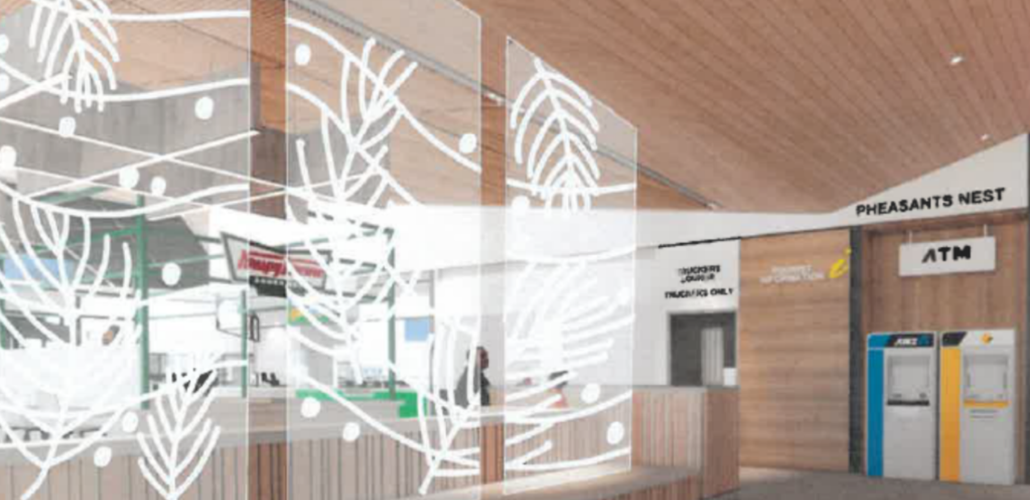Welcome to Ampol Foodary Pheasants Nest Northbound
A service centre designed to create an exceptional experience for motorists and home to the beautiful dining hall installation, The Lyrebird by Danielle Mate.

Balarinji
Balarinji, Australia’s foremost indigenous design and strategy studio, has supported us to develop Aboriginal work and Narrative for our Pheasants Nest Highway Service Centre, creating a space that connects with the D’harawal knowledge and stories, allowing travellers to rest and revive while appreciating the local culture.

The Lyrebird
Balarinji, Australia’s foremost indigenous design and strategy studio, has supported us to develop Aboriginal work and Narrative for our Pheasants Nest Highway Service Centre, creating a space that connects with the D’harawal knowledge and stories, allowing travellers to rest and revive while appreciating the local culture.
Lyrebird Story
By Glenda Chalker
Back in the beginning of time, in the Dreamtime, all the animals could speak to one another. Every now and then, the animals would all get together for a great ceremony and at this occasion it was on the Country of the lyrebird wiridjiribin.
At this time, some of the animals started to talk about other animals in a derogatory way, behind their backs, and caused a great conflict between them all. Wiridjiribin sought to resolve all the issues between them, so they could continue with the ceremony, however, the great spirit was upset by them and changed each animal to now have its own language, so they could no longer talk to one another or about one another. Wiridjiribin was the only of them that could still talk to them all and be the speaker of all languages.
Wiridjiribin is the totem of the D’harawal people of this Country. He is known as the peacemaker, being able to speak all languages. He is a mimic bird and sing different songs and sounds, he is able to copy other birds, chainsaws, sirens, cars and even crying babies.
Pheasants Nest was the name given to this area by European colonists. This is where they first encountered Wiridjiribin (lyrebirds). The closest bird that they knew of to a lyrebird was a pheasant, hence the name.
The Lyrebird Dining Hall Installation

The installation in Pheasants Nest Northbound was designed by Danielle Mate and depicts the Wiridjiribin (Lyrebird) which is a totem of the D’harawal people of this country.
The lyrebird is the speaker of all languages. She strings song together with the sounds to make music through repetition and mimicking. Danielle Mate used the following words of inspiration to design this artwork: repetition, music, song, songlines, beat, mimicking multiple languages.
The artwork pulls together the notion of song by representing the music staff or sound waves as 5 flowing lines in the background. Dots represent the sound notes in the lyrebird’s song, and the design also uses the smaller tail feathers of the bird.
The design is etched on Perspex to create a subtle wall/divider for the space, sectioned in three to create a softer and more vertical feel. The Perspex allows light to pass and enables the design to be viewed from both sides.
Danielle Mate, the appointed artist for the Pheasants Nest Highway Service Centre, acknowledges her culture through the Kunja people of the Cunnamulla region in South Western Queensland. Danielle has grown up on, lived on and worked on D’harawal Country. Danielle creates art that is relevant to where she is from, where she has been and where she is at in her current belonging and was recommended by the local stakeholders of the D’harawal community.

Ampol acknowledges the Traditional Custodians and divers cultures of the local lands on which we live, work, and operate. We pay our respects to Elders past and emerging.